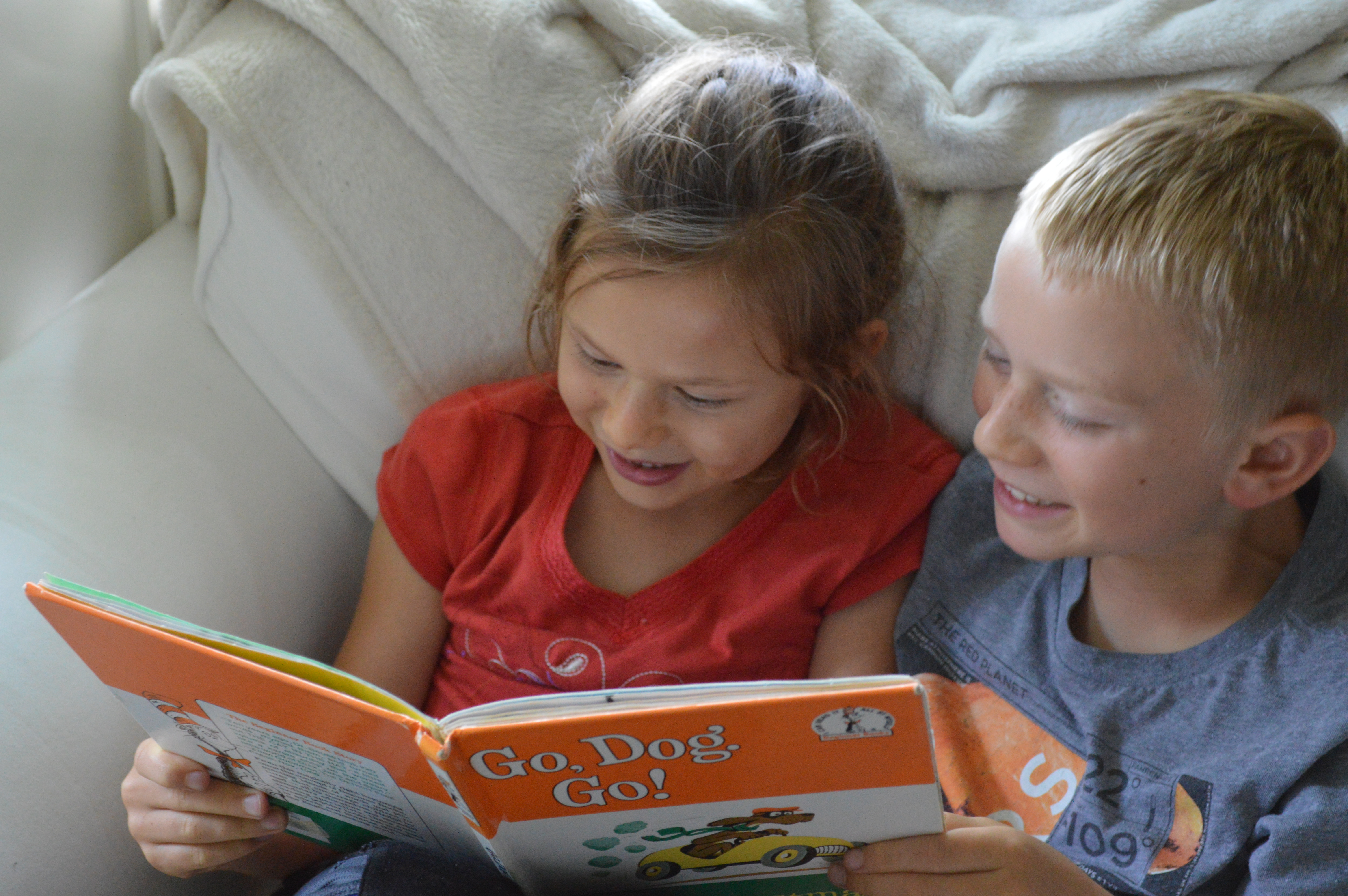
Learning to read is a wild and wonderful, frustrating and fantastic adventure for you and your child! Watching my children learn to read truly has been one of the most rewarding (and demanding!) parts of motherhood. So this year, instead of putting together the list of Lily’s favorite picture books that I would read to her (2 Year Olds and 3 Year Olds and 4 Year Olds and 5 year Olds) here are the books that she’s enjoyed reading herself this year!
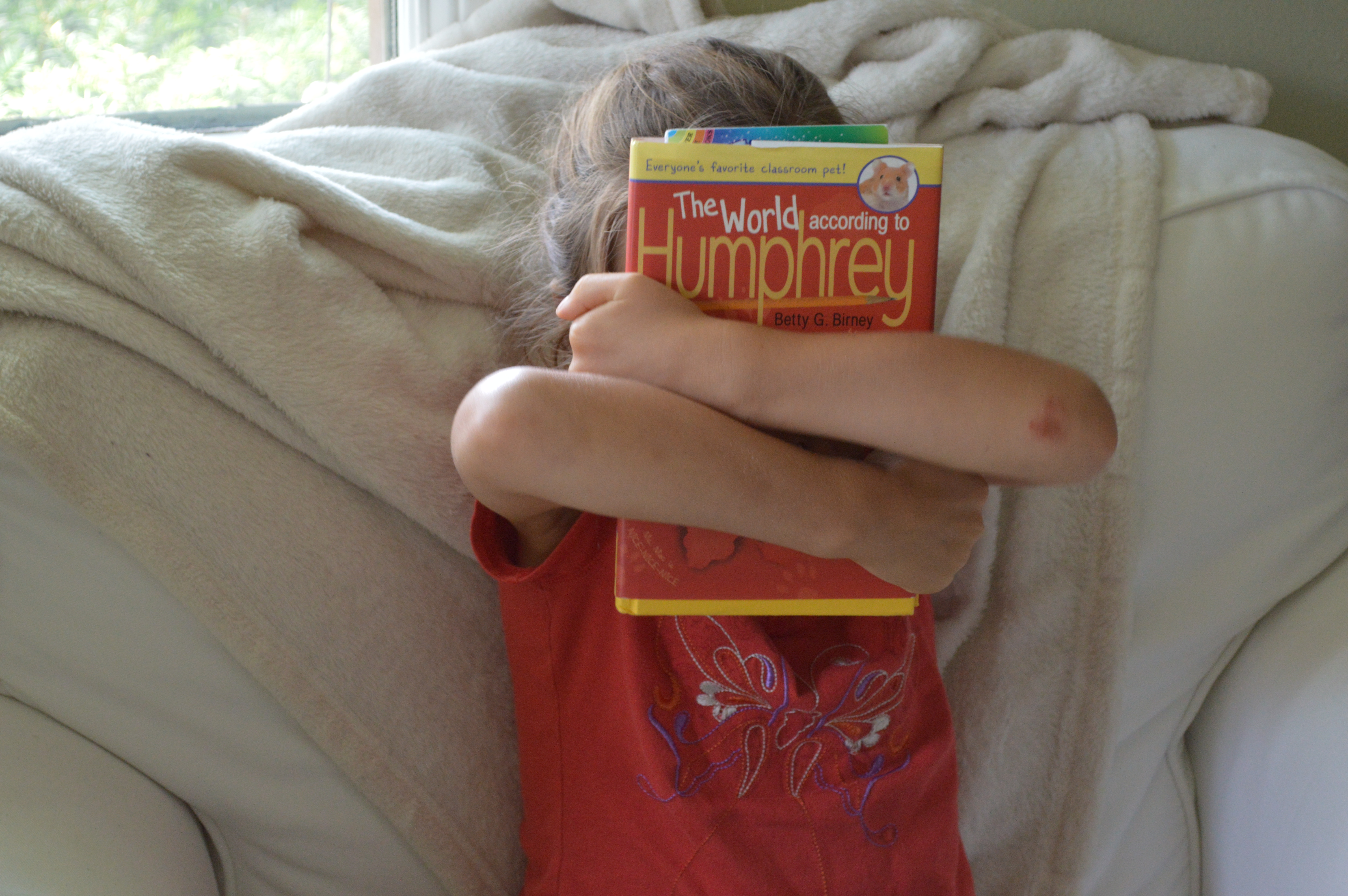
If I could hand you ONE book to make this whole process simpler, it would be: Phonics Pathways: Clear Steps to Easy Reading and Perfect Spelling by Dolores G. Hiskes. It’s usually around $20 and worth every penny. After your child knows their letter sounds (I love Montessori Letter Work for that), you can start on page 19 with Phonic Pathways.
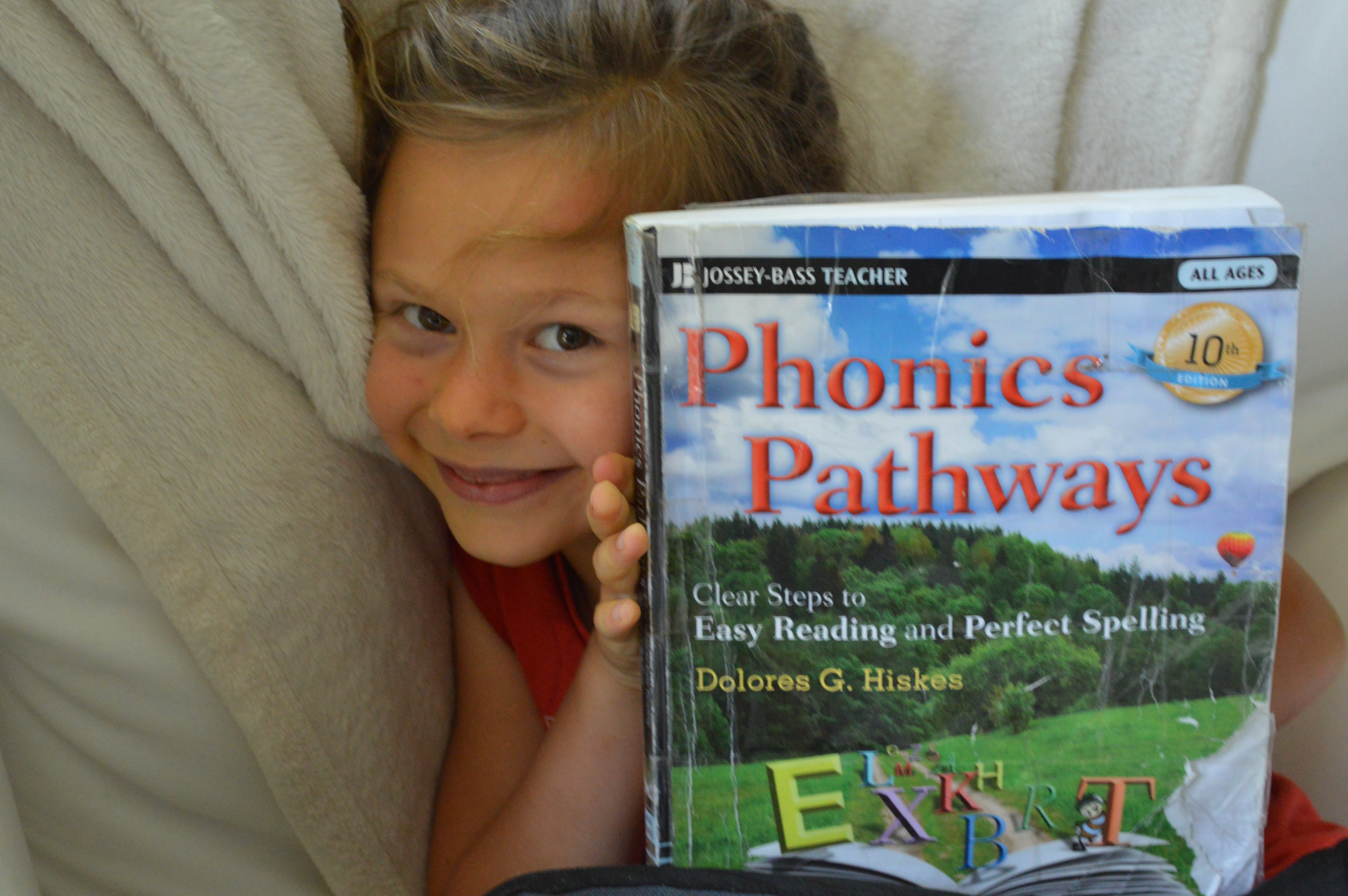
Do one page a day. When you get to page 52, then sprinkle in some “fun” decodable reader books (think BOB Books, although you may need to use the first couple from several sets to keep your reader at that initial level of difficulty). After you reach page 110 in Phonic Pathways, start sprinkling in some “Beginner Books” (think rhyming, easy Dr. Seuss) and Level 1 leveled reader books. Phonics Pathways is also great for spelling. Some people do both decoding (reading) and encoding (writing) at the same time, and others go through the whole book a second time with spelling in mind. Of course, there are also full multi-year curricula that put it all together for you (like All About Reading/Spelling or The Logic of English) which are great choices as well!
I firmly believe that it is easier to teach reading if you start with direct phonics instruction, then introduce decodable books, and then move on to leveled readers. If you have a child in school where they have to learn sight words early, I recommend using Sounding Out the Sight Words: An Alternative to Rote Memorization by Denise Eide and Cindy Kringelis.
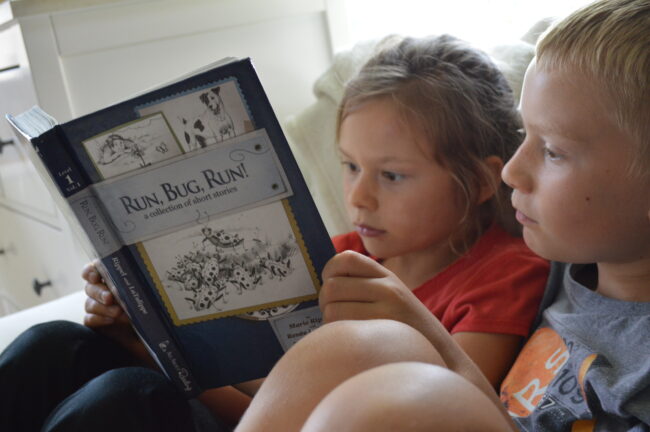
Decodable Books
Decodable Books are books in which your child can “sound out” every letter. Ex: A cat sat on a mat. Most decodable books have very few or no “sight words.” Books tend to be organized around particular sounds (“phonemes”), slowly introducing more complicated sounds like blended consonants (ex: flat or brat), long vowels like (ex: cake or make), and r-controlled vowels (ex: car or bird) as the series goes along.
Starting with decodable readers is so helpful, especially if you have a child prone to “guessing.” Decodable books do not tend to have a lot of literary merit, and kids often enjoy ones with physical humor or pictures that carry a lot of the plot. Kids also love to read, even a tiny eight page book, all by themselves.
Some children are going to fly through decodable books, some are going to need a long time with them. Everyone is different. Lily needed a lot more practice with these than Jackson did because we are pretty sure she’s inherited my dyslexia. I tried nearly all the sets of decodable books our local library had. Sometimes I’d find where in a series she was and jump in there (for example, if we were working on more advanced long-vowel patterns), or sometimes we’d start a new series from the beginning, so she had a lot of “easy wins” to build confidence.
Many of the decodable sets listed below were available at our library. The exceptions were All About Reading and American Language Readers Series. (If you have multiple children you are going to teach, and your library doesn’t have them, I found those two series to be worth owning.) Lily’s school had a subscription to A to Z reading, and they had a good collection of decodable readers there. But, I will say the decodable readers were hard to navigate within the website, and it would default to the leveled readers. Leveled readers seem like more fun, but they really are harder and more frustrating for many students.
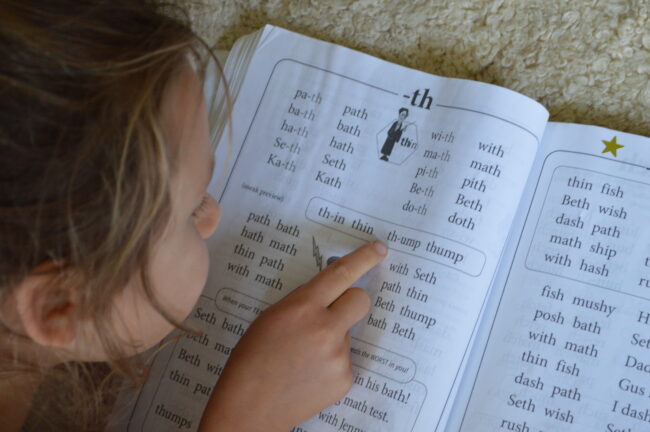
TIP: When I’m reading with emerging readers, I put my finger under the word that they are sounding out. If they get the word wrong, I double-tap my finger and don’t move on. If, after a couple of attempts, they still haven’t gotten the word and the word has more than three letters, I’ll help them in a few ways. If they couldn’t get the word “boat,” I might tell them it has three sounds. Or if they couldn’t get the word “flap,” I’d cover up letters so they can build the sound out. I’d start by covering up everything but the “a” (they say “ah”), then the “ap” (they say “app”), then I’d uncover the l (they’d say “lap”), and finally show the whole word.
Decodable Book Series List
- BOB Books (sets 1-5)
- All About Reading Readers (Bug Run Bug, The Runt Pig, Cobweb the Cat)
- Targeted Phonics by Sharon Coan (ex. A Nap),
- Dandelion Launchers by Tamar Reis-Frankfort and Wendy Tweedie (ex Meg and Ted),
- Flyleaf Publishing Emergent Reader by Laura Appleton-Smith (ex Ann Can),
- Now I am Reading: Animal Antics by Nora Gaydos (Rat Naps),
- Little Learners Love Literacy: The Adventures of Pip and Tim by Berys Dixon and Maureen Pollard (Pip and Tim),
- Primary Phonics by Educators Publishing Service
- StarFall (Free on the App) (Zac and Cat)
- Logic of English Foundations Decodable Readers
- American Language Readers Series by Guyla Nelson and Saundra Lamgo, Volume 1-6)
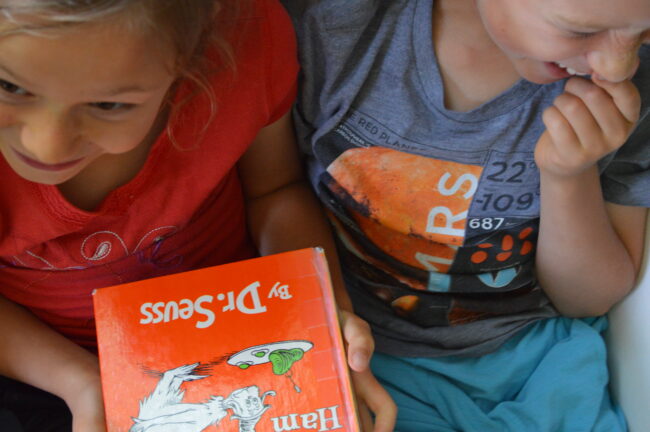
Beginner Books by Dr. Seuss and Co
(AR Levels 0.6-2.4 / Guided Readers Level A-L / Lexile Levels 100-400)
These are classic books that we own the hardback colored collections of, but you can pick and choose stand-alone books just as easily. Nearly all libraries should have a good number of these. They tend to have a lot of rhyming words and simple vocabulary without the tricky proper nouns and predictive text of level readers.
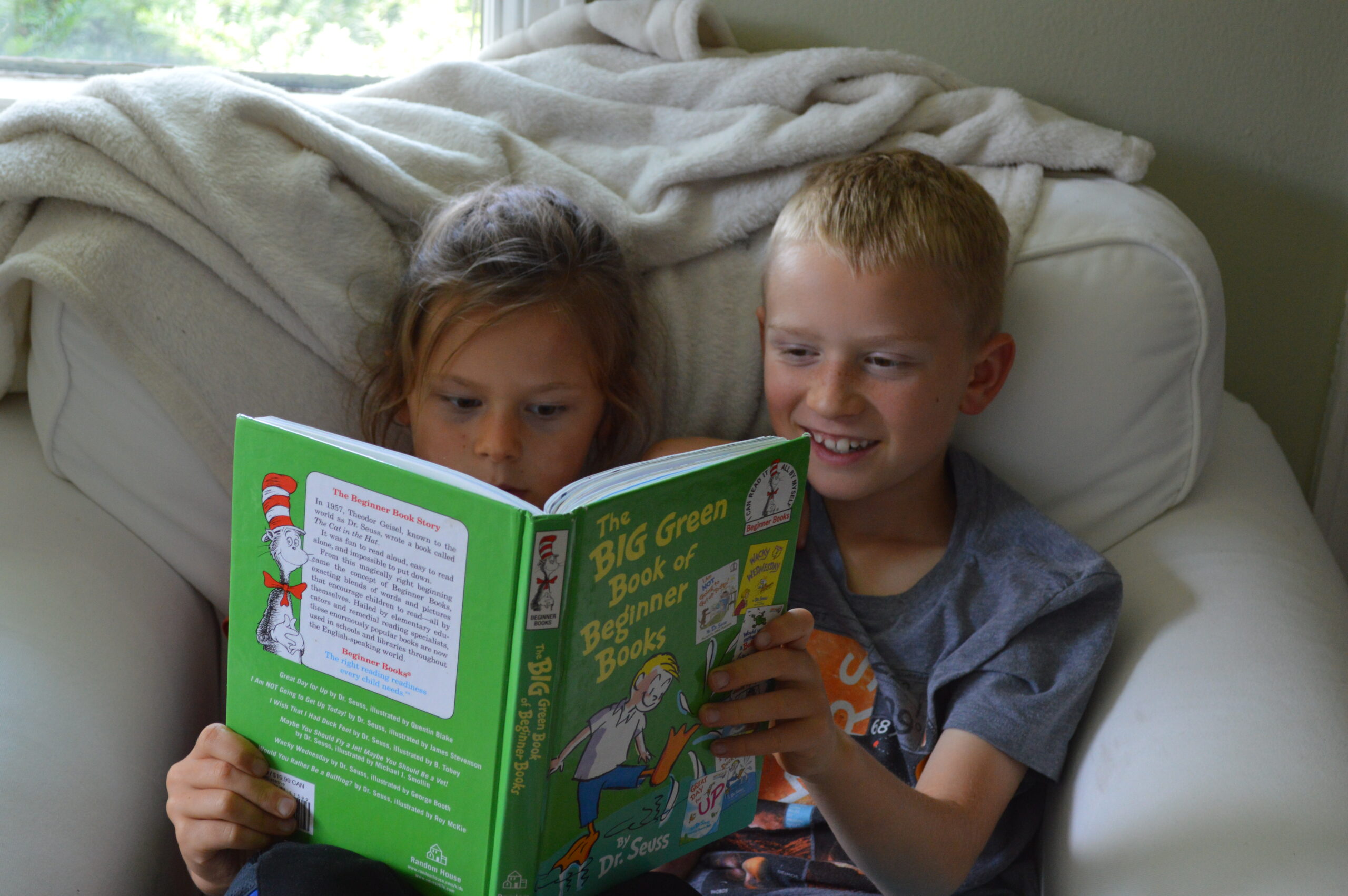
- Big BLUE Book of Beginner Books : Go, Dog. Go!, (1.2) Are You My Mother?, (1.6), The Best Nest (2.1), Put Me In the Zoo (1.4), It’s Not Easy Being a Bunny (2.4) and A Fly Went By. (1.9)
- AQUA Book of Beginner Books : The Cat in the Hat Comes Back (2.1), There’s a Wocket in My Pocket (2.1), New Tricks I Can Do (1.8?), Please Try to Remember the First of Octember (2.2), and Hand, Hand, Fingers, Thumb!
- PURPLE Book of Beginner Books: A Fish Out of Water (1.7), I’ll Teach My Dog 100 Words (2.0), Fred and Ted Go Camping (1.2), Snow, Flap Your Wings (2.0) and Big Dog . . . Little Dog (1.7).
- RED Book of Beginner Books: Sam and the Firefly (1.7), I Want to Be Somebody New! (1.8),The Very Bad Bunny, (2.4) Stop That Ball!, The Digging-est Dog (2.3), Robert the Rose Horse (1.8).
- ORANGE Book of Beginner Books : Marvin K. Mooney Will You Please Go Now 1.1, Hooper Humperdink…Not Him! (1.5), Ten Apples Up on Top! (1.2) Because a Little Bug Went Ka-Choo! (2.2) , In a People House, The Shape of Me and Other Stuff (1.7). //
- Me/YELLOW Book of Beginner Books: The Foot Book (0.6), The Eye Book (0.8), The Tooth Book (2.1), The Nose Book (1.4), The Ear Book (0.7), The Knee Book.
- GREEN Book of Beginner Books: I Am Not Going to Get Up Today (2.1), Wacky Wednesday (1.3), Maybe You should Fly a Jet! Maybe You should be a Vet!, Would You Rather Be a Bullfrog, I Wish That I Had Duck Feet (2.2), and Great Day for Up (0.8). And while technically not one of the colored books, this would round out most of the essential short Dr. Seuss books:
- Dr. Seuss’s Beginner Book Collection (Cat in the Hat (2.1), One Fish Two Fish Red Fish Blue Fish (1.7), Green Eggs and Ham (1.5), Hop on Pop (1.5), Fox in Socks (2.1)

Level 1 Readers
(AR Levels 0.4 – 1.9 / Guided Readers Level A-J / Lexile Levels 100-325)
Level 1 readers are hard to make into great literature. I have listed our favorites below, but I would probably suggest that you get whatever level 1 readers are available at your library, generally you don’t need to buy these as long as your library or school has enough of them. Also, skip the readers that are based on shows and movies, because most of those have a lot of names of characters that are really hard for kids to sound out (ex “Lightening McQueen”). Of course, some kids are very motivated by reading about their favorite characters, so you know your own child. But know that those proper nouns can trip kids up and encourage them not to sound things out.
- Cat Traps, Big Egg, Hot Dog, Fox Trot by Molly Coxe (0.4-0.7)
- Andy & Sandy by Tomie DePaulo (0.7-1.0)
- The Giggle Gang books by Jan Thomas (0.7-1.1)
- Am I a Frog? (I Love Insects, It Is Time) by Lizzy Rockwell (0.9)
- Elephant and Piggie by Mo Williams (0.5 – 1.2)
- Biscuit Books from My First I Can Read by Alyssa Satin Capucilli and illustrated by Pat Schories (AR 0.8 to 1.5)
- See the Cat: Three Stories About a Dog by David LaRochelle and illustrated by Mike Wohnoutka (1.2)
- Go, Dog. Go!, by PD Eastman (1.2)
- Baby Monkey, Private Eye by Brian Selznick and David Serlin (1.4)
- Are You My Mother? by PD Eastman (1.6)
- Drip, Drop (1.3)and Mac & Cheese (1.9) by Sarah Weeks and illustrated by Jane Manning
- Jack Books by Mac Barnett and illustrated by Greg Pizzoli (1.2 -2.2)
- Fox Books by Edward Marshall and illustrated by James Marshall (1.8 to 2.2)
- Charlie the Ranch Dog by Ree Drummond and illustrated by Diane deGroat (1.8-1.9)
- Ling & Ting (1.8 to 2.2) by Grace Lin
- Big Max by Kin Platt and illustrated by Robert Lopshire (2.1)
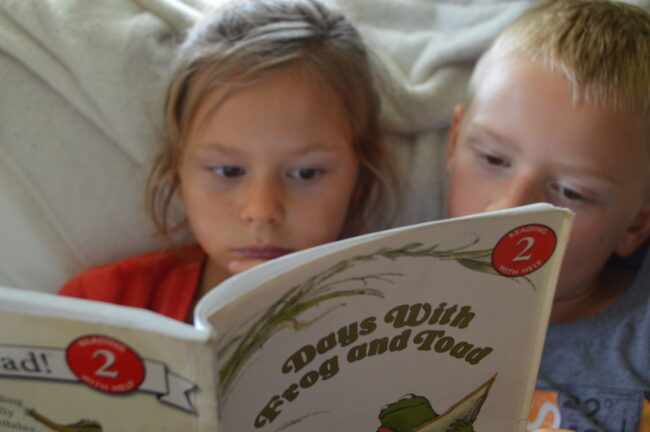
Levels 2 & 3 Readers
(AR Level 2.0 -3.0 / Guided Readers Level K-N / Lexile Levels 400 – 550)
Once you get into level 2 readers, you get some really lovely books. (Honestly, some of them were so good that we read them as read-alouds too often for Lily to use them as readers because she had them mostly memorized!) The books on this list are the books that were fun enough to keep Lily’s attention, but not so silly that I hated reading them. My mother said that when I was a little girl, the Little Bear books turned me into a reader. And I would say for Lily, it was the Fox books. (We read these mostly in a hammock. Picking a fun, focused reading location can help!) These are also the sort of books that your child might be completely not ready for one month, and six weeks later can breeze through them. I have included and arranged the books by AR (Accelerated Reader) levels for the whole series, which is a rough estimate of how difficult the book is. If you pick a series that is too challenging, set it aside for a while, and pick a book that has a lower level.
- Little Bear by Else Holmelund Minarik and illustrated by Maurice Sendak (1.4 to 2.4)
- Danny and the Dinosaur by Sid Hoff (2.3)
- Poppy and Sam Complete Book of Farmyard Tales by Heather Amery and illustrated by Stephen Cartwright
- Pedro (1.7 to 2.2) & Katie Woo (1.9 to 2.9) by Fran Manushkin
- Arthur by Marc Brown (2.0 to 3.2)
- Charlie & Mouse by Laurel Snyder (2.0 to 2.3)
- Henry and Mudge by Cynthia Rylant (AR 2.1 to 2.9) Also (Poppleton (2.0 to 2.7), Annie and Snowball (2.1 to 3.0) and Mr. Putter & Tabby (2.1 -3.5)
- Nate the Great (2.0 to 3.2) and Olivia Sharp (3.0-3.2) by Marjorie Weinman Sharmat
- Dodsworth by Tim Egan (2.4- 2.9)
- Frog and Toad books by Arnold Lobel (2.5 to 2.9)
- Mercy Watson by Kate DiCamillo (2.6 to 3.2)
- Oliver and Amanda Pig by Jean Van Leeuwen (2.3 to 2.6)
- Young Cam Jansen (2.3 to 2.9) and Bones (2.1 to 2.5) by David A Alder
- Yasmin (2.2 to 2.7) by Saadia Faruqi,
- Bramble and Maggie (2.0 to 2.6) by Jessie Haas
- Mouse and Mole by Wong Herbert Yee (2.5 to 2.9)
- Ana & Andrew by Christine Platt (2.6 to 3.5)
- Hot Fudge Hero by by Pat Brisson (est. 2.7)
- Cornbread & Poppy by Matthew Cordell (2.9)
- The Fire Cat by Esther Averill (2.9)
- Tales for Very Picky Eaters by Josh Schneider (2.9)
- Bread and Jam for Frances (3.3) by Russell Hoban and Lillian Hoban
- The Princess in Black by Shannon Hale (3.0 to 3.5)
- Andy Shane by Jennifer Jacobson (3.1 to 3.7)
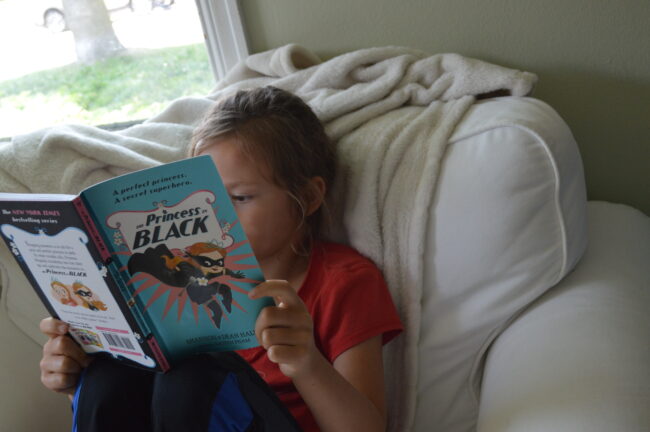
First Early Chapter Books
(AR Levels 2.6 to 5.2 to Guided Readers Level M-S / Lexile Level 425-825)
Sometimes the jump from a picture on every page to a full page of text can be hard. Don’t be afraid to read the first chapter (or whole book!) to your child to get them interested in a series. Just as Lily is turning 7, she is enjoying the first couple of sets of books, while Jackson cruised through the whole list at her age. Remember, everyone is different, and slow and steady gets you there in the end just as well. Also, there is often a gap between what your child “can” read aloud to you for reading instruction time and what they want to read for fun. That is pretty normal, even adults often do that!
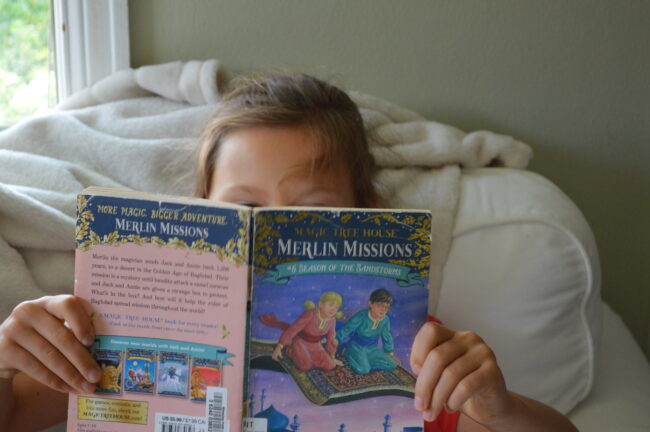
- The Magic Treehouse by Mary Pope Osborn (2.6 to 4.1)
- Humphrey’s Tiny Tales by Betty G. Birney (3.2 to 3.6)
- The Last Firehawk by Katrina Charman (3.1-3.7)
- Cam Jansen by David A. Adler (3.2 to 3.9)
- A to Z Mysteries by Ron Roy (3.2-4.0)
- Anna Hibiscus by Atinuke (3.6 to 4.1)
- Tales of Deckawoo Drive by Kate DiCamillo (3.7 to 4.6)
- Catwings by Ursula K. Le Guin (3.7 to 4.3)
- Make Way for Fenway! by Victoria J. Coe (3.7 to 3.9)
- Zoey and Sassafras by Asia Citro and illustrated by Marion Lindsay (3.8 to 4.2)
- Encyclopedia Brown by Donald J Sobol (4.1 to 5.3)
- Heartwood Hotel Series by Kallie George (4.2 to 4.5)
- Charlotte’s Web by E.B. White (4.4)
- All-of-a-Kind Family by Sydney Taylor (4.9)
- Classic Starts (AR 3.9 to 5.7)
- Betsy-Tacy series by Maud Hart Lovelace (4.0)
- Henry Huggins series by Beverly Cleary
- Ramona by Beverly Cleary (4.8 to 5.6)
- Half Magic series by Edward Eager (4.7 to 5.3)
- Cricket in Time Square by George Seldan (4.9)
- Paddington by Michael Bond (4.7 to 6.1)
- The Adventures of Geraldine Wookins series by Karin Kaufman
- Milly Molly Mandy By Joyce Lankester Brisley (5.2)
- Melendy Quartet by Elizabeth Enright (5.3-5.9)
- The Hardy Boys by Franklin W. Dixon (5.2-6.3) / Nancy Drew by Carolyn Keene (4.5 to 6.5)
For More Series Ideas I recommend checking out Read Aloud Revivals list of books for Developing Readers
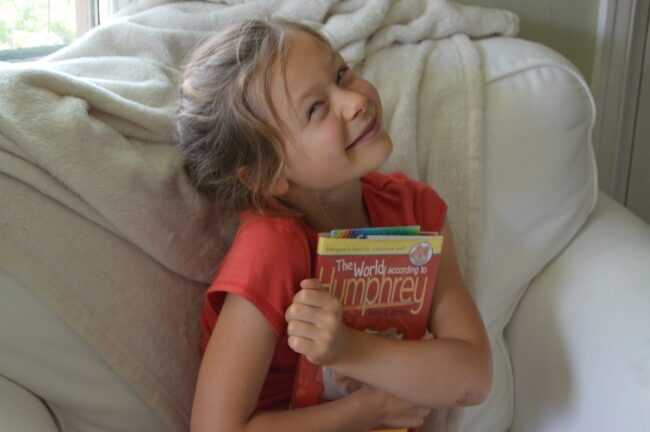
What books were your favorites when you were first learning to read?
Thanks Amy this is wonderful resource!!
Thanks Rachel! I think it might be one of the more better lists of books I’ve made! I certainly wish that I had had it 5 years ago. 🙂 I hope it’s helpful!! — Amy
What a great list of phonics based resources. Thank you for sharing helpful tips too!
Thanks Hannah!!